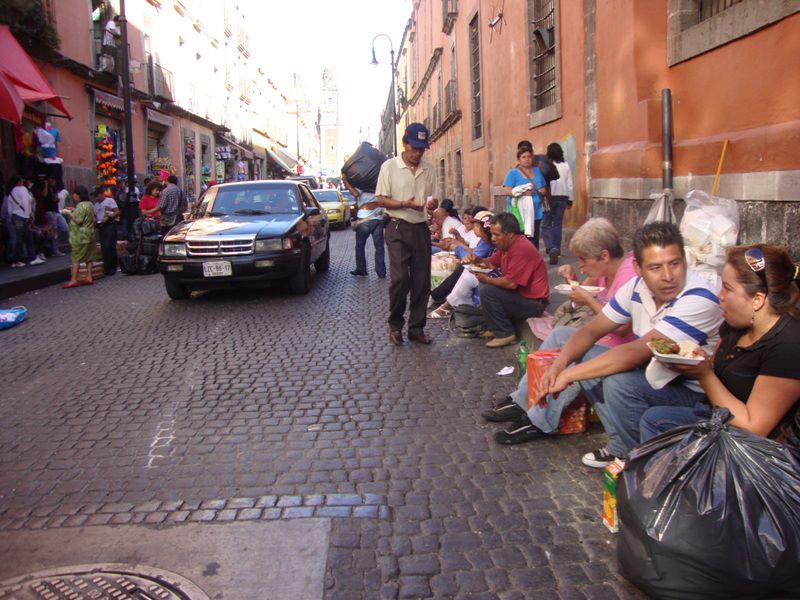All the travelers I’ve met here had a different impression of what to expect in Mexico City. Some expected dusty streets with wagons and horses, others expected crime ridden boroughs where you were likely to get robbed by most any one you saw on the street. Mexico city, or CdM (Ciudad de Mexico) by locals, is an interesting dichotomy of these expectations and the realizations.
Mexico City is, without arguement, a dirty place. As you walk around the main city square, El Zocalo, your sinuses are assaulted by the stench of sewage, raw human waste that one can only imagine is teaming through the sewers in an aquifer of fermenting excrement just below the city’s streets.
I was originally appalled by the trash I saw littered about but came to realize, once I had some trash of my own to discard, that there are no trash receptacles anywhere. Store owners have at least responded to the lack of human waste receptacles by opening their bathrooms to the public for a small fee. Giant colorful banners declaring W.C. (for water closet) can be seen on every block, hanging next to those advertising shoes or clothing or museum openings. Still there was nothing to do with my own trash but hurl it to the side of the road, as I’d watch the locals do, or carry about my sticky plate of pinapple for the rest of the day.
Conversly, Mexico has an outstanding public transit system. Busses seem to come every two minutes so seeing your arrive a couple blocks ahead of you is no reason to run. The next one should be by in moments. For a local trip, the cost is equivalent to about fifty cents. The Metro costs half that to anywhere in the city, and we’re taking about a city of 573 square miles. Travel between cities is just as easy. There are several different companies each with busses leaving about every 15 minutes to anywhere you want to go in Mexico. I went to the town of Puebla, about 2 hours away on a first class motor coach, for about $12 dollars.
Getting on the right bus can be a little overwhelming, especially when we’re talking about the local routes. All the busses have the major stops they make posted on the front of them, if you can discern them from the religious prostelizations and graphic representations of the virgin mother, but you never know what route they’re going to take to get there. You could easily end up on a bus that winds through a catacomb of streets to pick up half the driver’s family before you get to your destination. Still, that’s part of the experience. Plus when else are you going to get to ride a bus next to a live chicken? Besides, it doesn’t matter how long it takes as there’s no shortage of vendors getting on the bus at eat stop to sell chiclets, churros and a multitude of other foods I can’t even begin to guess at.
Other transportation advancements I’ve seen here are electric taxis and a free shared bike program. I haven’t yet taken a taxi as I was warned that I’d end up in an alley deprived of all my belongings should I do so, but I did “borrow” a bike today. Seriously, I just left my ID and they gave me a bike to ride for free for three hours, which is really hard to undersrtand on there part as it would be relatively easy to get killed on a bike here. These free bike shacks are located all over town in addition to other bike stations that are use by the locals. For those you pay an annual fee of $30, and you can use them all you want. The stations are located throughout the city. You check out the bike using your code and return it within 2 hours to any station you want. The prolific placement of the stations means there’s one just about anywhere you need it.
So overall, Mexico is dirty but efficient. It’s good to know that no matter how deeply you’re entrenched in waste, you’re only minutes away from a cheap ride to somewhere else.

